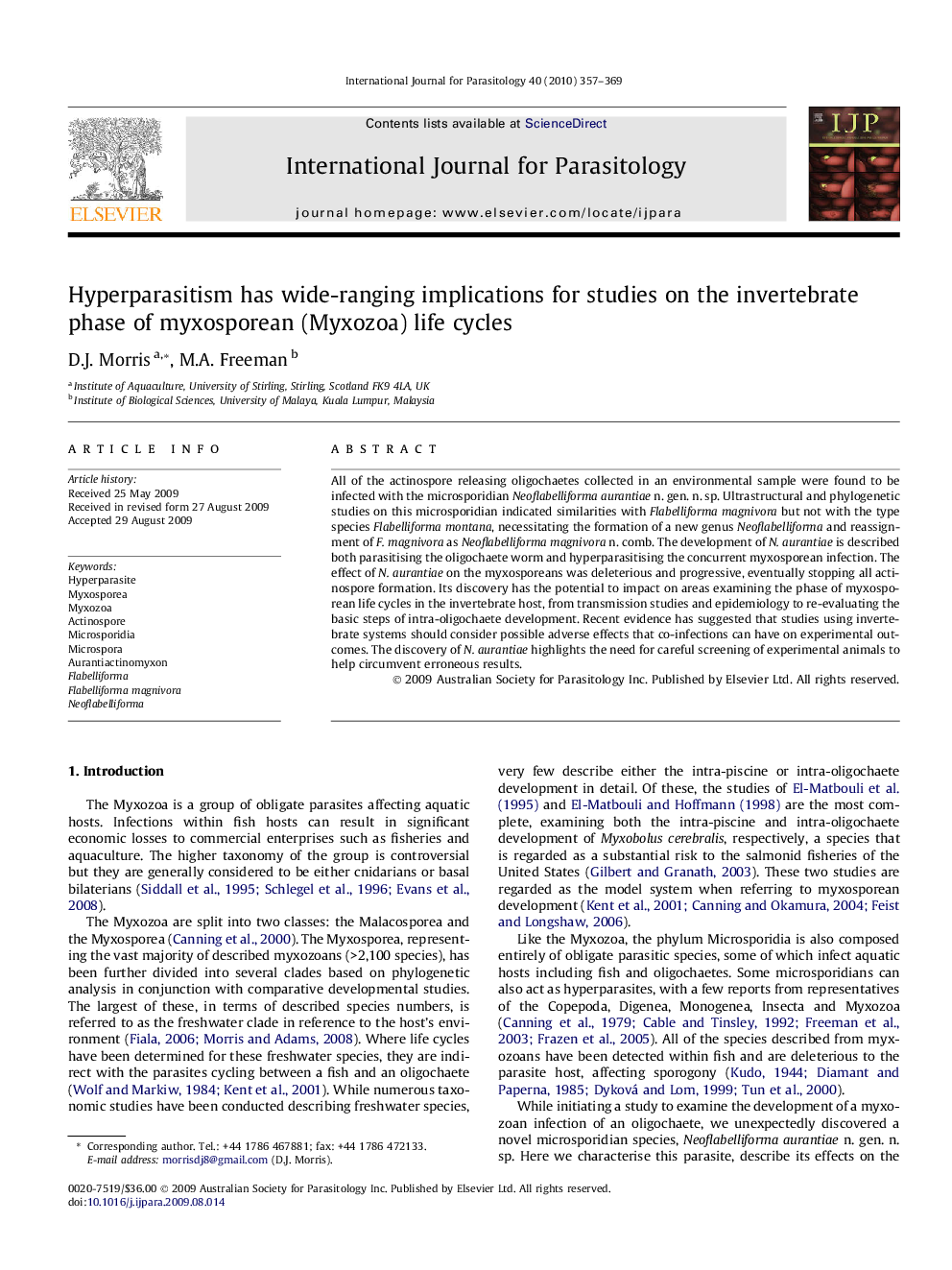| کد مقاله | کد نشریه | سال انتشار | مقاله انگلیسی | نسخه تمام متن |
|---|---|---|---|---|
| 2436601 | 1107327 | 2010 | 13 صفحه PDF | دانلود رایگان |

All of the actinospore releasing oligochaetes collected in an environmental sample were found to be infected with the microsporidian Neoflabelliforma aurantiae n. gen. n. sp. Ultrastructural and phylogenetic studies on this microsporidian indicated similarities with Flabelliforma magnivora but not with the type species Flabelliforma montana, necessitating the formation of a new genus Neoflabelliforma and reassignment of F. magnivora as Neoflabelliforma magnivora n. comb. The development of N. aurantiae is described both parasitising the oligochaete worm and hyperparasitising the concurrent myxosporean infection. The effect of N. aurantiae on the myxosporeans was deleterious and progressive, eventually stopping all actinospore formation. Its discovery has the potential to impact on areas examining the phase of myxosporean life cycles in the invertebrate host, from transmission studies and epidemiology to re-evaluating the basic steps of intra-oligochaete development. Recent evidence has suggested that studies using invertebrate systems should consider possible adverse effects that co-infections can have on experimental outcomes. The discovery of N. aurantiae highlights the need for careful screening of experimental animals to help circumvent erroneous results.
Figure optionsDownload high-quality image (30 K)Download as PowerPoint slide
Journal: International Journal for Parasitology - Volume 40, Issue 3, 1 March 2010, Pages 357–369